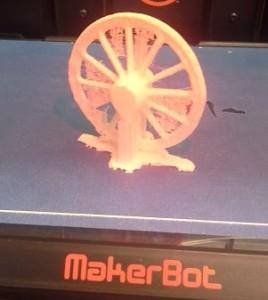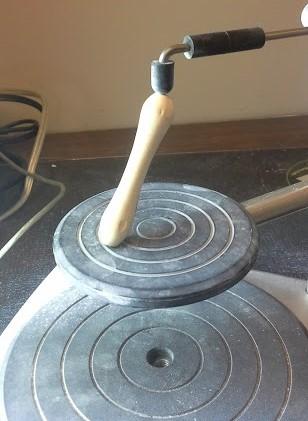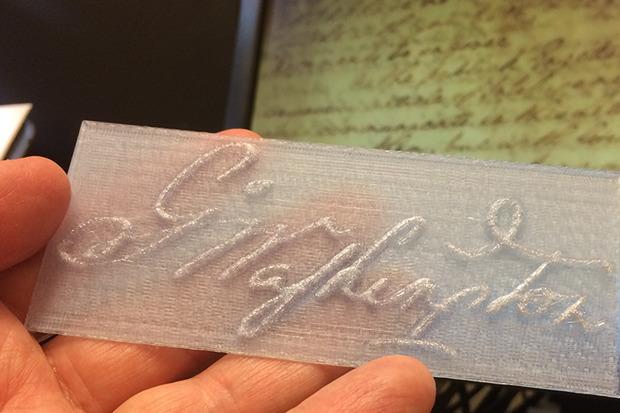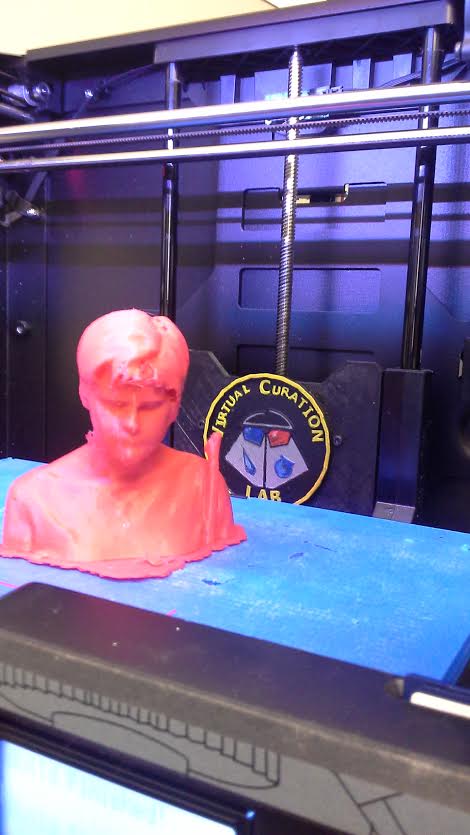 While there are thousands of people who have benefited from 3D printing technology, some of those who have benefited the most are those with disabilities. My favorite stories are the stories about 3D printed assistive devices. Never before has it been so easy to develop devices that help people with disabilities to walk, grip objects, or perform other tasks that were previously difficult or impossible for them.
While there are thousands of people who have benefited from 3D printing technology, some of those who have benefited the most are those with disabilities. My favorite stories are the stories about 3D printed assistive devices. Never before has it been so easy to develop devices that help people with disabilities to walk, grip objects, or perform other tasks that were previously difficult or impossible for them.
Several ingenious people have also been using 3D printers to help visually impaired people to “see” in new ways. From tactile picture books to new tablet technology, the visually impaired have more options than ever before, and are getting the chance to experience things that they’ve never been able to experience before. Like museums, for example. Kimmy Drudge, a visually impaired 14-year-old girl, has never been able to enjoy a visit to a museum. She’s gone to them with her family, but her experience wasn’t particularly enjoyable.
“To my daughter, a visit to a museum was always just the experience of walking around a building touching glass cases while mom talked, describing the contents,” said Drudge’s mother, Dawn Peifer.
The Virginia Historical Society is one museum working to create ways for Drudge and others like her to experience historical artifacts for themselves. Andrew Talkov, vice president for programs at the museum, recently enlisted the help of Bernard Means, PhD an anthropology professor at Virginia Commonwealth University, to begin creating some 3D printed artifacts that people could touch and hold.
“I’m trying to figure out how we can use 3-D printing to make the experience better for everybody — because who doesn’t want to be able to handle the [artifact] that’s behind the glass, even if it’s just a reproduction — but specifically for the visually impaired,” said Talkov.
 Dr. Means is the director of VCU’s Virtual Curation Laboratory, which is dedicated to creating a digital archive of historical artifacts. The lab also uses a 3D printer to create replicas of certain items for exhibits. The professor was happy to help, and took a few days to scan and print a number of artifacts from the Historical Society, including a wheel from a Conestoga wagon, a cigar store Indian from 1924, and an iron breastplate, circa 1622, on loan from the Virginia Department of Historic Resources. Perhaps coolest of all, he also scanned and 3D printed George Washington’s signature from a letter the President had written to his stepson.
Dr. Means is the director of VCU’s Virtual Curation Laboratory, which is dedicated to creating a digital archive of historical artifacts. The lab also uses a 3D printer to create replicas of certain items for exhibits. The professor was happy to help, and took a few days to scan and print a number of artifacts from the Historical Society, including a wheel from a Conestoga wagon, a cigar store Indian from 1924, and an iron breastplate, circa 1622, on loan from the Virginia Department of Historic Resources. Perhaps coolest of all, he also scanned and 3D printed George Washington’s signature from a letter the President had written to his stepson.
“The idea behind 3-D printing a signature is that you can tell people that George Washington signed this document, but even if you could hold the real thing — which, of course, you can’t, [because] it’s too fragile — it’s not going to mean anything to you if you’re visually impaired,” said Dr. Means. “Even if you translate that document into braille, you’re getting a translation of that document. But by 3-D printing [Washington’s signature], somebody could trace it and feel it, and get a sense of the ‘G’ and [Washington’s] cursive. This is actually touching George Washington’s signature.”
For Kimmy Drudge, who visited the museum recently, the experience was everything she’d never been able to get from museums before. Her face lit up as she ran her fingers over the 3D printed replica of Washington’s signature.
“Oh, there’s the ‘W’!” she exclaimed. “And the ‘H’!”

A wig curler owned by George Washington’s brother gets 3D scanned
Drudge was the first visually impaired person to visit the Virginia Historical Society and “test” the 3D printed artifacts. Dr. Means and Talkov took her around the museum and handed her a variety of the printed objects, including a miniature replica of the breastplate from 1622, plus several items Dr. Means brought from his own collection – artifacts that he had scanned and printed from other sites. These included a wig curler used by one of Washington’s brothers, an Aztec figurine of a dog dated back to the 1500s, a “rosette” formed from two Civil War bullets that collided in mid-air, and, of course, the world’s oldest peanut. Drudge, who was allowed to keep all of the 3D printed artifacts she was shown, declared Dr. Means to be “the Jedi Master of 3D printing.”
Peifer, who is the president of the Virginia Association for Parents of Children With Visual Impairments and also works at VCU’s Partnership For People With Disabilities, was thrilled to see her daughter finally able to fully experience and enjoy a trip to a museum.
“Any steps that are taken [to make museums more accessible to the visually impaired] are huge,” she said. “What a tremendous impact it will make for individuals who are blind/visually impaired to be able to explore replicas or samples. I am thankful and thrilled to see VHS making strides to make their museum more accessible to the blind/visually impaired community — and cannot wait to come back to explore more.”
Drudge has also herself been 3D scanned and 3D printed, with her own mini-me coming off the printer just today! What do you think of the differences the technology is making? Discuss in the 3D Printed Artifacts forum over at 3DPB.com.
[Source: Virginia Commonwealth University/Images courtesy of Dr. Bernard Means]Subscribe to Our Email Newsletter
Stay up-to-date on all the latest news from the 3D printing industry and receive information and offers from third party vendors.
You May Also Like
Profiling a Construction 3D Printing Pioneer: US Army Corps of Engineers’ Megan Kreiger
The world of construction 3D printing is still so new that the true experts can probably be counted on two hands. Among them is Megan Kreiger, Portfolio Manager of Additive...
US Army Corps of Engineers Taps Lincoln Electric & Eaton for Largest 3D Printed US Civil Works Part
The Soo Locks sit on the US-Canadian border, enabling maritime travel between Lake Superior and Lake Huron, from which ships can reach the rest of the Great Lakes. Crafts carrying...
Construction 3D Printing CEO Reflects on Being Female in Construction
Natalie Wadley, CEO of ChangeMaker3D, could hear the words of her daughter sitting next to her resounding in her head. “Mum, MUM, you’ve won!” Wadley had just won the prestigious...
1Print to Commercialize 3D Printed Coastal Resilience Solutions
1Print, a company that specializes in deploying additive construction (AC) for infrastructure projects, has entered an agreement with the University of Miami (UM) to accelerate commercialization of the SEAHIVE shoreline...































